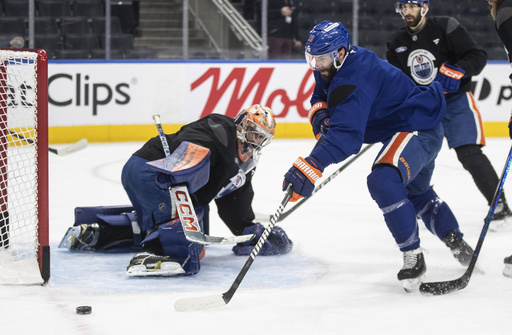During a recent NHL general managers meeting, Commissioner Gary Bettman addressed the timeline for implementing tracking technology in the league, which could accurately identify high-sticking and confirm whether a puck has fully crossed the goal line. Bettman emphasized that the technology would be adopted “when we’re certain that it works,” highlighting the importance of extensive testing to ensure reliability. “We will test it and re-test it, but we haven’t hesitated to spend the money or the time on technology to improve the game,” he stated.
In line with this commitment to innovation, the NHL is set to expand its use of Hawk-Eye measuring and tracking systems through a new partnership with Sony. This announcement was made just hours before the start of the Stanley Cup Final. The Hawk-Eye technology, which is widely used in tennis to judge if balls are in or out, is now poised to provide hockey officials and the league’s situation room with the tools to make more accurate calls during close plays.
“We’re closer — we keep getting closer,” said David Lehanski, NHL Executive VP of Business Development and Innovation. He explained that the ultimate solution for the NHL would involve multiple inputs and diverse technologies. This may consist of active tracking within the puck, players, jerseys, optical cameras, and potentially other types of technology that all need to be integrated.
For the past decade, the league has harnessed Sony’s Hawk-Eye technology within every arena as part of the Synchronized Multi-Angle Replay Technology (SMART) services. This enhances the speed and accuracy of replay reviews and coach’s challenges, while also aiding in the monitoring of player health and safety.
The technology has reached a level of sophistication where cameras can capture 29 skeletal points on each player plus three additional points on the sticks. “What that enables us to do is to have an incredibly high-fidelity, low-latency view of the athletes’ movements in real time,” remarked Rufus Hack, CEO of Hawk-Eye Innovations. While the NHL has a clear vision for the technology, Hack noted that the league is still in the exploratory stages of its potential applications.
According to Lehanski, a combination of different technological elements could assist with on-ice tasks such as assessing penalties and player positioning. Off the ice, enhancements such as animated telecasts and visualizations are set to continue. The league aims to use Sony cameras to bring viewers at home an experience that rivals the in-arena excitement.
“(It’s about trying to) bring that game experience into everyone’s homes,” explained Theresa Alesso, Sony’s President of Imaging Products and Solutions in the Americas. As cameras evolve to become better, smaller, and lighter, capturing dynamic angles of the game for home viewers becomes increasingly crucial.


